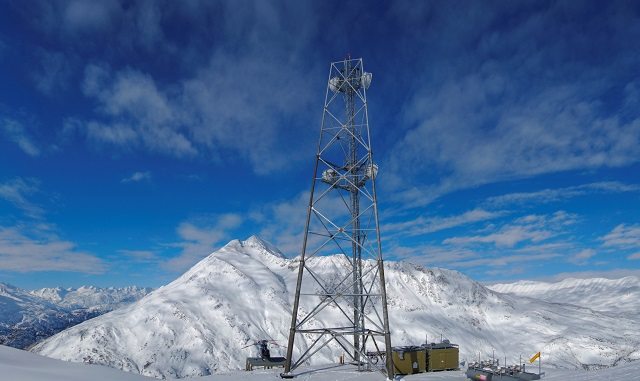 According to Padraic Casey, Safety Manager of Vertical Limit Construction, LLC the telecommunication industry is unique in and of itself but the extreme weather conditions workers face add a level of risk like no other.
According to Padraic Casey, Safety Manager of Vertical Limit Construction, LLC the telecommunication industry is unique in and of itself but the extreme weather conditions workers face add a level of risk like no other.
Professionals working in the telecommunication industry who are exposed to extreme cold or who work in cold environments may be at risk of developing cold stress. “This is especially true for those unaccustomed to this type of environment,” Casey said. “Extreme cold weather is a dangerous situation that can lead to serious health emergencies in affected workers.”
Those without adequate shelter, outdoor/at height workers, and those who work in an area that is poorly insulated or without heat, are at a higher risk, Casey said. The causes of cold stress and its effects can vary across different areas of the country. In regions, relatively unaccustomed to winter weather, near freezing temperatures are considered factors for cold stress. “Whenever temperatures drop decidedly below normal and as wind speeds increase, workers are at greater risk of having the heat leave their body and lowering their core temperature. These weather-related conditions may lead to serious health problems or even death,” Casey said.
 Unfortunately, some workers, usually inexperienced, fail to account for wind chill when preparing for cold weather work. Up to 80 percent of an individual’s bodily heat loss can be attributed to wind chill on cold days. “Workers need an understanding of how wind chill affects their bodies and the actual outside temperature instead of relying on what the thermometer reads,” Casey said. “For example, an external ambient air temperature of 34 degrees Fahrenheit with no wind may seem comfortable. However, the same 34 degrees will feel bitterly cold with a 25 mile-per-hour wind. The wind can blow away the thin layer of insulating air between the skin and the protective air between it and layers of clothing. This creates a much colder environment for the worker and needs to be considered when dealing with cold stress,” he said.
Unfortunately, some workers, usually inexperienced, fail to account for wind chill when preparing for cold weather work. Up to 80 percent of an individual’s bodily heat loss can be attributed to wind chill on cold days. “Workers need an understanding of how wind chill affects their bodies and the actual outside temperature instead of relying on what the thermometer reads,” Casey said. “For example, an external ambient air temperature of 34 degrees Fahrenheit with no wind may seem comfortable. However, the same 34 degrees will feel bitterly cold with a 25 mile-per-hour wind. The wind can blow away the thin layer of insulating air between the skin and the protective air between it and layers of clothing. This creates a much colder environment for the worker and needs to be considered when dealing with cold stress,” he said.
One of the most common types of cold stress is hypothermia. It ensues when an individual is exposed to cold temperatures; their bodies lose heat faster than it can be produced. Extended exposure to cold will ultimately use up susceptible workers’ stored energy. The result is hypothermia or an unusually low core temperature. A core temperature that is too low affects the brain, making the victim unable to reason clearly or move well. Hypothermia is particularly hazardous because, according to Casey, a worker may not realize it is happening and may not be able to do anything about it.
Signs and symptoms of hypothermia can vary depending on how long a worker or individual has been exposed to cold temperatures. “Workers who are in the early stages of hypothermia will often experience uncontrolled shivering, unexplained fatigue, impaired coordination, and may seem to be confused or disorientated,” Casey said. “In the latter stages of hypothermia workers may have stopped shivering, have their skin turn a pale bluish/purple color, dilated and unresponsive pupils, a slower pulse and respiratory rate, and a loss of consciousness,” he said.
November 22, 2017




Reader Interactions